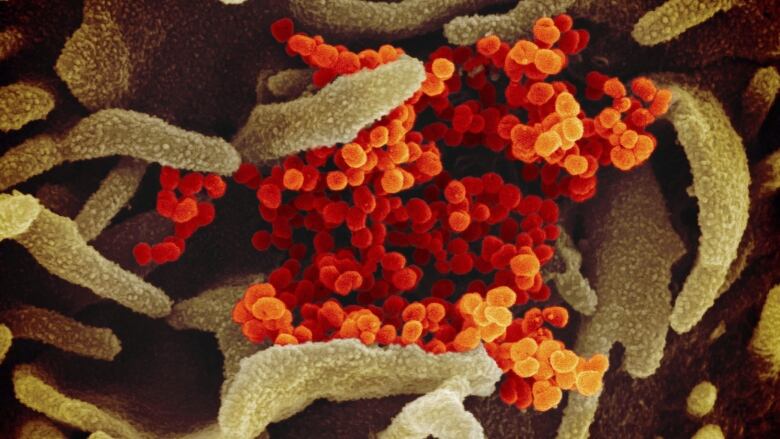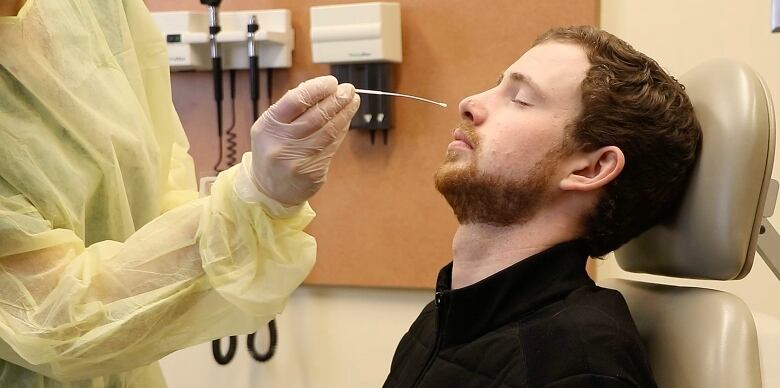A COVID-19 glossary: What the terms mean and some subtle differences
What's the difference between an epidemic and a pandemic? What is contact tracing?

Confused about the language that health and government officials are using during thisCOVID-19 pandemic?
Below is our glossary forterms currentlyin circulation as officials strive to keep people informed.
Community transmission
When referring to how a disease is spread, one of the methods is community transmission.
In the case of COVID-19, it means that an infected person has not come into known contact with anyone who is infected and that the source of infection is unknown.
Contact tracing
Contact tracing is what public health authorities use to track a virus's spread. It involves three steps.
First is contact identification. Once a person is infected and symptomatic with a disease, the person is asked about their activities and their interactions with others.

That's followed by contact listing. Once contacts with the infected person are identified, they'reinformed of their status and advised to get early care if they begin to develop symptoms. Ifthey are considered high risk, they may also be advised to isolate themselves.
Finally, there is contact follow-up, where doctors get in touch with people who came into contact with the infected personto see if they begin to develop symptoms.
Coronavirus, COVID-19 and SARS-CoV-2
Coronaviruses are a common cause of colds and other upper respiratory infections, but this pandemic involves a strain of coronavirus that is new to the world's human population.
Coronavirus is used as a kind of shorthand these days in some media reports, and the new strain is more accurately called the novel coronavirus. The illness caused by the virus is called COVID-19, also referred to by the World Health Organization (WHO) as coronavirus disease 2019.
Some articles in medical journals use alesser-known term for the virus:SARS-CoV-2 (severe acute respiratory syndrome coronavirus 2).
The WHO says it's avoiding that term, since it could be confused with the SARS outbreak in 2003.
Endemic, epidemic and pandemic
A disease that is endemic is one that re-emerges on a seasonal basis, occurring at a predictable rate in a certain area or among a set population, such as malaria.
Epidemic is used when the number of infections rises above what is normally expected in a certain population or region.An outbreak is basically the same thing as an epidemic, although the term is often used to cover a more limited geographic area, according to the Centers for Disease Control and Prevention (CDC).
Pandemic relates to the geographic spread of a disease. The WHO designatedCOVID-19 as a pandemic on March 11, citing the spread of the new virusto several countries.
Epicentre
A city or country where an outbreak is most pronounced.
Flattening the curve
Flattening the curve refers to a graph that illustrates the spread of a disease and the ability of health systems to cope.
If a large number of people become infected and require medical care, it can overwhelmthe overall health-care system. This can result in shortages ofprotective equipment, hospital beds or even doctors and nurses.
On the graph, it's represented as a steep curve.

If adequate measures are taken to avoid the spread of infection and fewer patients require medical care, the curve on the graph isn't as sharp, and there would be a better chance that patients can receive the necessarycare. This is referred to as "flattening the curve."
Nasopharyngeal vs.oropharyngeal swabs
To be tested for the virus, health-care professionals need to collect samples. This can be done one of two ways.
A nasopharyngeal swab can look like an extra-long Q-Tip or a plastic wand with a collectionsurface on the end. It is inserted up the nose, far back where the health-care professional collects a sample by swabbing. This is the method preferred by the World Health Organization in testing for COVID-19.

However, there is another method of collection available to health-care professionals:an oropharyngeal swab. Instead of going up a patient's nose, the sample is collected orally at the back of a patient's throat.
PPE
This is shorthand for personal protective equipment, and for health-care workers on the front line, it includes isolation gowns, foot covers, eye gear, face masks and gloves.
R0
R0, pronounced "R-naught" is a measurement used to describe the intensity of an outbreak.
R0 is only used when everyone is vulnerable to a disease, meaning no one has had the disease before, and therefore has not been vaccinated. As a result, there is no way to control the spread.
An R0 value of 1 means that each infection will cause one new infection. If it's greater than 1, each infection will cause more than one new infection. This could create a potential epidemic.
The outbreak in China had an early R0 value estimate of 1.4 to 3.9.
Presumptive and confirmed cases
A presumptive case means that a local health agency has received a positive test result from a patient. But the test often needs to be validated with a second test. Some provincial labs, such as those inOntario,British Columbia, Quebec and Alberta, conduct the second test, whereas other provinces need to send a sample to theNational Microbiology Lab in Winnipeg.
Once two tests have come back positive, it is a confirmed case.
Resolved
An infection case is considered resolved when a person is no longer infected with the virus.
Self-isolation vs. quarantine vs. shelter-in-place
Self-isolation vs. quarantine vs. shelter-in-place
The terms are often used interchangeably. But health officials sometimes distinguish between "quarantine" and "isolation," which can be both voluntary and mandatory.
Self-isolationapplies only to people who are known to be infected,according to some experts. Others use self-isolation as a synonym for quarantine. In both cases, those isolated need to stay at home and keep away from people who are not sick.
WATCH|How does coronavirusquarantine work?
Quarantinedescribes separating and restricting the movement of people who may have been exposed to a contagious disease to see if they become sick. People who are quarantined could be healthy and are not necessarily infected.
Shelter-in-placeis used in some parts of the U.S. and broadly means to quarantine. People are asked to stay at home with only limited exceptions, such as briefly shopping for essentials or going outside for exercise while still staying away from others.
Social distancing versus physical distancing
The World Health Organization stressed onMarch 25 that it is no longer using "social distancing" in its updates. It now prefers the term"physical distancing" to remind people to stay in touch with the elderly and other vulnerable groups.
The terms are interchangeable, and according to top health experts, distancing means keeping at least two metres away from others.














_(720p).jpg)


 OFFICIAL HD MUSIC VIDEO.jpg)
.jpg)



























































































